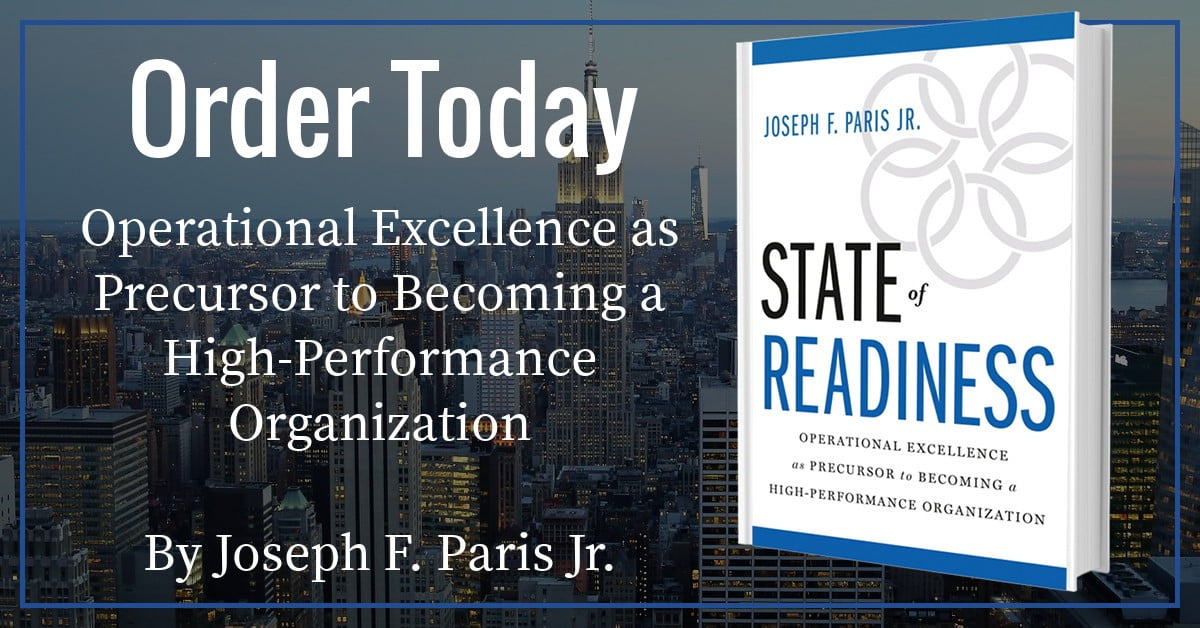Inspiration for Innovation
I enjoy guest lecturing at University. In fact, it is one of my most favourite things I do. I believe what I enjoy most is the optimism and energy of the students. They are far too young in their careers to have been tarnished by the pragmatism, and even cynicism, of “real life” – or to have had their ambitions squelched by a jealous manager whose best days are past.
Of course they have little to lose by taking risks – even reckless risks. They don’t have a spouse or family. They don’t have a mortgage or other serious obligations. They don’t have to worry about their children’s college tuition, health issues, retirement or even having a sufficient “moat” around their castle to protect what they have from life’s quirks.
No. At this stage in their careers, anything and everything is possible – the world is their oyster and they can piss over a boxcar. There are nearly an infinite number of “do-overs” available to them. It’s a great time in their lives.
When I guest-lecture, the students believe I am giving them so much. Perhaps this is true, but the irony is this; what I receive in return for my giving is as valuable to me as whatever I say might be to them.
For what I receive in return is renewed vigor and the removal of some of the tarnish that has naturally collected on me as time passes. The experience of guest-lecturing turns back the clock just a little bit to a time where I was younger, more energetic, impetuous, inquisitive – certainly more naïve – but also at my most creative and innovative.
I return from such engagements energized with my head held a little higher, my ambitions fortified and my creativity recharged.
I recently returned from such an opportunity in Monterrey, Mexico where I was a Keynote (Conferencia) at the 18th Industrial Congress hosted by the Instituto Technologico y de Estudios Superiores de Monterrey (ITESM). It was the third time that I addressed the Industrial Congress and I am hoping not my last. The students at ITESM are among the very brightest I have ever met.
They are certainly some of the most passionate and empathetic students with whom I have had the privilege to engage.
They are faced with serious challenges in the rigor of their academics, compounded by economic worries and, of course, the uncertainty associated with the significant and serious security issues that are a result of an escalation in extreme violence from the drug cartels that plague the country. Yet in the face of these challenges, they keep a focus on what is important and continue to press onward.
Yes. I always enjoy the opportunity to address the Industrial Congress and ITESM.
On this most recent trip back from Monterrey Mexico, I started to think back on my various experiences and how they relate to companies and the people who work at them. I thought about innovation and the inspiration and passion that is its kernel. I naturally started to think about the most innovative companies in the world.
In a Forbes Magazine article, “The World’s 10 Most Innovative Companies and How They Do It” (April 4th, 2011), Booz and Company surveyed more than 450 “innovation executives” (defined as senior managers and R&D professionals) as to who they believed were the most innovative companies in the world. In the survey, Innovative “Intensity” was defined as the percentage of Revenue spent on R&D.
Looking at the chart, I would expect that Google’s R&D Intensity (at 12.0%) would be significant as it is the youngest company listed. I would also expect that Intel’s R&D Intensity (at 16.1%) would also be significant (given that Moore’s Law states that the average product life-cycle at Intel would be close to 18 months). I expect Microsoft’s R&D Intensity (at 15.4%) would also be significant given all of the products it has to maintain – and that it has to defend against Google encroaching on its core business (Operating Systems and Business Office Applications).
The average Innovative “Intensity” of the Top-10 was 7.23%. So what surprised me was that, on this metric, Apple (at 3.1%) – the most revered of innovative companies by its peers – had a level of Intensity that was less than 50% of the average of Top-10.

Beyond the survey conducted by Booz and Company, a great many people think that Apple is innovative – some even argue that it is the most innovative company that exists in the world today. Personally, I have my reservations. Certainly Apple was innovative when it was founded and launched its first personal computer – and it was again innovative a few years later in the mid-1980’s when it launched the Macintosh with its revolutionary new operating system which allowed users to run multiple applications at the same time (an operating system whose concept originated at XEROX and would later be borrowed by Microsoft for Windows). Certainly Apple again demonstrated innovation when it launched iTunes to support its iPod-Touch personal digital music device.
But this is only three major innovations over a life-span over thirty years – and only one of them (iTunes) has been over the last twenty years…
– The iPhone was just an iPod-Touch with some telephone technology added.
– The iStore was just an extension of iTunes to deliver applications to the iPhones.
– And the iPad is just a larger version of the iPhone.
There is no real innovation contained in these at all… and AppleTV is too young to judge.
So with such an apparent dearth of innovation in reality, how is it that Apple is considered the most innovative company by the “peers of innovation”?
What about the other “innovative champions” on the list? Most of the innovation to be found in these other listed companies comes from the innovations of other companies – which they subsequently purchased. Innovation that is the result of aggressive and sustained acquisition campaigns as opposed to the innovation being “home-grown” or a “grass-roots effort” of from within the company itself.
This is not meant to diminish the achievements of the companies whose innovation strategy largely depends upon acquisition – nor that of executive leadership, or the performance of management, or the strategies. In fact, perhaps this is the true essence of each company’s achievement – successful acquisition and assimilation of innovation to keep the company modern, competitive and, ultimately, relevant.
By most assessments and metrics that can be applied, all of the companies listed as being top innovators are also highly successful and respected; they are organizations that other companies hope to emulate (and often chase).
What if, instead of companies being innovative, their people were?
… And the fact that their people were innovative reflected favourably enough on the company that the companies, in turn, were considered innovative?
Going back to Apple; I respect Steve Jobs and all of his accomplishments, both professionally and personally, a great deal. One could even argue that his most innovative work occurred outside of Apple at another company he founded – Pixar (eventually purchased by Disney) – a company that revolutionized and transformed the film industry. He was a driven businessman and entrepreneur, he was a relentless perfectionist and he was dedicated to delivering a user-experience that was simple and solid.
Maybe the true secret to Apple being considered so innovative a company was that Steve Jobs was certifiably innovative himself – earning his pedigree whilst at Apple and duly reinforced whilst elsewhere?
As Apple navigates the transitions to the “post Steve Jobs” period; will it offer as much trust or allow such leeway to his successor? Or will it become more conservative and incrementally more risk adverse – preferring to purchase its future innovation. The answer to this lies in how Apple handles its next flop (all companies have them) – maybe this first test will come early with AppleTV?
Full disclosure: I never bought an Apple product – though I did win an iPod-Touch at a Texas Hold ‘Em Tournament once. It’s a nice product that I rarely use.
It all comes down to this one simple question: did Steve Jobs instill his personal culture for innovation and risk-taking as the critical component of the corporate culture of Apple or not? The answer to this question will determine what type of company Apple will be in the future.
There is precedent for companies being started by innovators and maintaining a culture of innovation across generations – companies like;
– General Electric; Founded by Thomas Edison and now largely an acquirer of innovation.
– Bell Labs; Founded by Alexander Graham Bell (the inventor of the telephone) and now, after a long run,
largely evaporated – having been incrementally repackaged and sold over the years.
– International Business Machines (IBM); Founded by Thomas Watson and re-invented by Lou Gerstner after a
near-death experience in the early 1990’s.
However, one of my favourite innovators of all time was a relatively unknown inventor, serial entrepreneur and innovator by the name of William Lear.
Lear was born in Hannibal, Missouri in 1902. His official and traditional schooling ended with the 8th grade and he joined the United States Navy at aged 16 – where he became a pilot –during World War I. After the war and at age 20, he founded Quincy Radio Laboratories which was contracted by Galvin Manufacturing to engineer a radio that would work in an automobile.
Lear was eventually awarded a Patent for his automobile radio and was instrumental in helping to transform Galvin Manufacturing into Motorola, in 1930. Motorola was to grow and to continue through this day – and is consistently known as one of the most innovative companies in the world, having had this culture for innovation firmly instilled at its founding.
Lear later turned to his love of flying. He invented the first aeronautical radio compass and the first autopilot system (called the Learmatic Navigator) as well as the first automatic landing system. Ultimately, he founded Learjet – a company dedicated to making state-of-the-art small jets for corporations.
But Lear was not perfect in his inventions. He also invented a device that recorded and played-back on a continuous-looped magnetic strip – the 8-Track. The 8-Track player was offered a decent opportunity for success, but in the end it was a flop.
Ultimately, I believe that companies are founded by entrepreneurs. The vast majority of these entrepreneurs are also innovators – with many being serial entrepreneurs and innovators, repeating the feat multiple times. I believe the key to being a serial innovator is to be continually exposed to new ideas, cultures and challenges – especially those of the younger generations (and also the future consumers) – both for freshness and for vigor.
Whether a company itself becomes an innovator (or not) depends upon the level of success that the founding innovator has in transferring their “DNA for Innovation” to the corporate culture of the company that was founded – and for how long this culture of innovation can be maintained once the founding innovator has departed.
Whether the innovation company can withstand the test of time will be measured by how it reacts to its first real challenge after the founder has departed.
I wonder how Apple will react when it has its first “8-Track” moment post Steve Jobs?
… That will be the true test of the greatness of his creation – and of himself as well.
About the author
Joseph Paris is an international expert in the field of Operational Excellence, organizational design, strategy development and deployment, and helping companies become high-performance organizations. His vehicles for change include being the Founder of; the XONITEK Group of Companies; the Operational Excellence Society; and the Readiness Institute.
He is a sought-after speaker and lecturer and his book, “State of Readiness” has been endorsed by senior leaders at some of the most respected companies in the world.
Click here to learn more about Joseph Paris or connect with him on LinkedIn.








